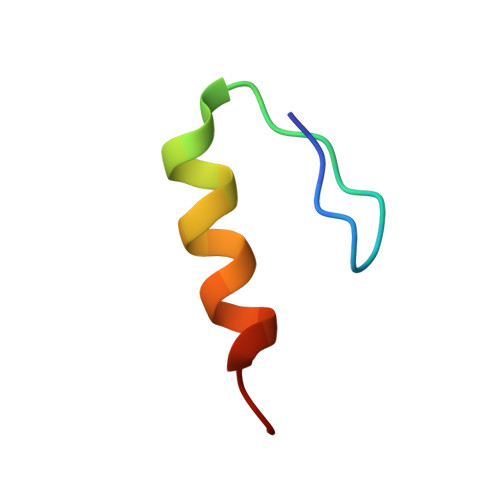The biophysical requirements that govern the efficient endosomal escape of designed mini-proteins.
Giudice, J., Brauer, D.D., Zoltek, M., Vazquez-Maldonado, A.L., Dadina, N., Kelly, M., Schepartz, A.(2025) Nat Chem 17: 1227-1235
- PubMed: 40629095
- DOI: https://doi.org/10.1038/s41557-025-01846-4
- Primary Citation of Related Structures:
9AZI - PubMed Abstract:
The ZF5.3 mini-protein escapes endosomes efficiently to guide proteins into the cytosol and/or nucleus. However, other than the requirement for small or unfoldable cargo and an intact HOPS complex, little is known about how ZF5.3 traverses the limiting endocytic membrane. Here we characterize the requirements for efficient endosomal escape. We confirm that ZF5.3 remains folded at high temperatures and at pH values between 5.5 and 7.5. At lower pH, ZF5.3 unfolds cooperatively upon protonation of Zn(II)-binding His side chains whose pK a matches that of the late endolysosomal lumen. pH-induced unfolding of ZF5.3 is essential for endosomal escape, as an analogue that remains folded at low pH fails to efficiently reach the cytosol. Once unfolded, ZF5.3 interacts in a pH-dependent manner with bis(monoacylglycero)phosphate, a lipid present in the inner leaflet of late endolysosomal membranes. These data provide a biophysical model for HOPS-dependent endosomal escape.
- Department of Chemistry, University of California, Berkeley, Berkeley, CA, USA.
Organizational Affiliation:

















